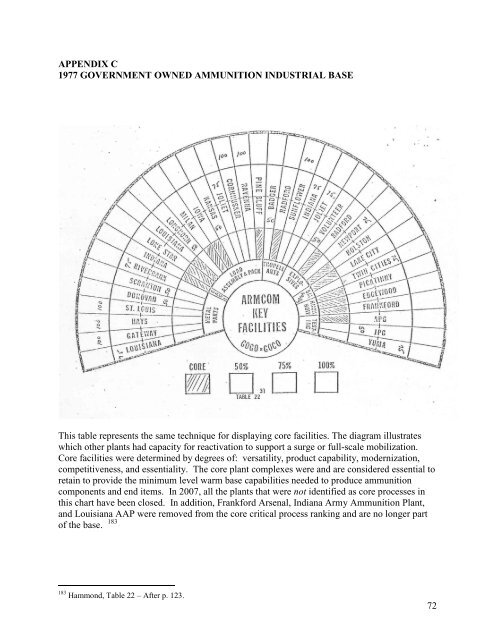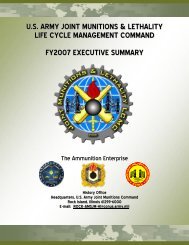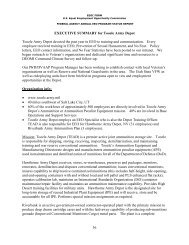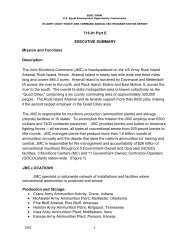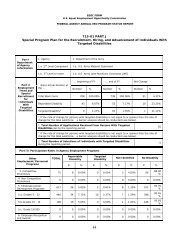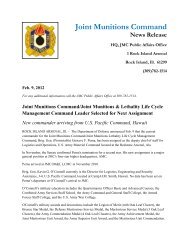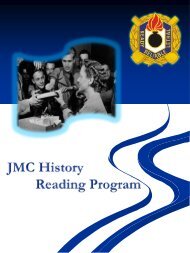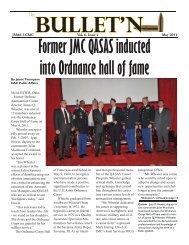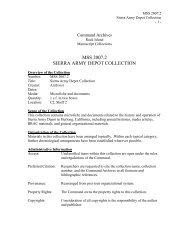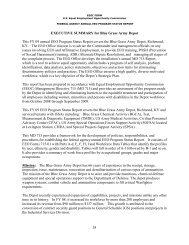History of the Ammunition Industrial Base - JMC - U.S. Army
History of the Ammunition Industrial Base - JMC - U.S. Army
History of the Ammunition Industrial Base - JMC - U.S. Army
You also want an ePaper? Increase the reach of your titles
YUMPU automatically turns print PDFs into web optimized ePapers that Google loves.
APPENDIX C<br />
1977 GOVERNMENT OWNED AMMUNITION INDUSTRIAL BASE<br />
This table represents <strong>the</strong> same technique for displaying core facilities. The diagram illustrates<br />
which o<strong>the</strong>r plants had capacity for reactivation to support a surge or full-scale mobilization.<br />
Core facilities were determined by degrees <strong>of</strong>: versatility, product capability, modernization,<br />
competitiveness, and essentiality. The core plant complexes were and are considered essential to<br />
retain to provide <strong>the</strong> minimum level warm base capabilities needed to produce ammunition<br />
components and end items. In 2007, all <strong>the</strong> plants that were not identified as core processes in<br />
this chart have been closed. In addition, Frankford Arsenal, Indiana <strong>Army</strong> <strong>Ammunition</strong> Plant,<br />
and Louisiana AAP were removed from <strong>the</strong> core critical process ranking and are no longer part<br />
<strong>of</strong> <strong>the</strong> base. 183<br />
183 Hammond, Table 22 – After p. 123.<br />
72


